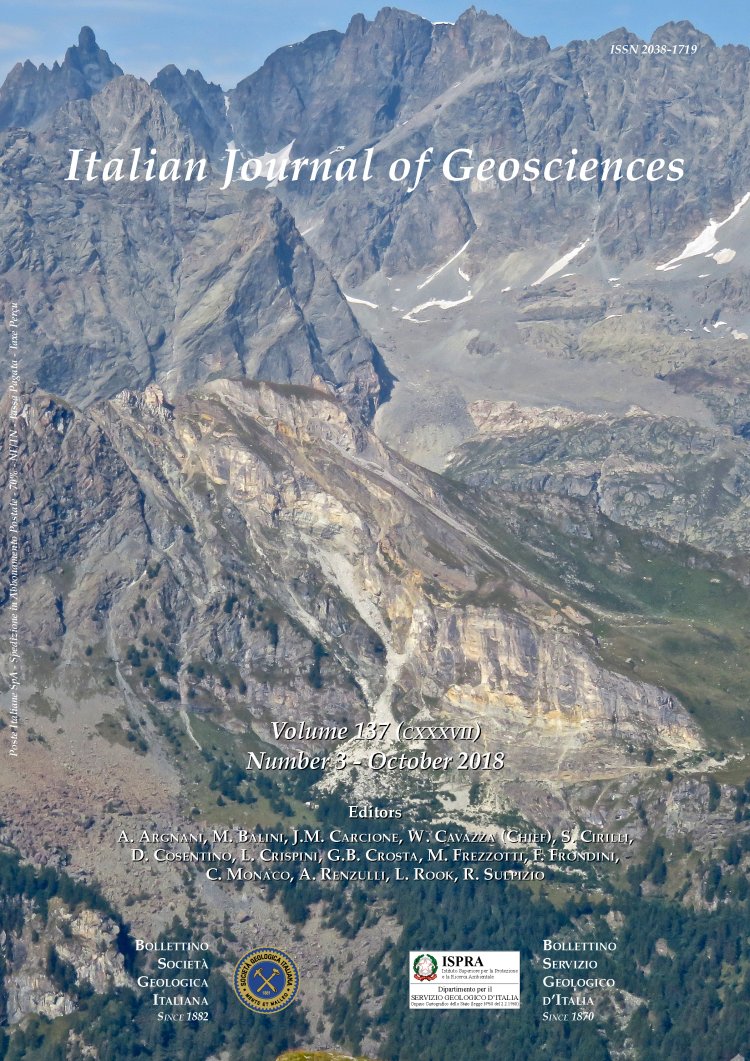

Inverse modelling to unravel the radiogenic isotope signature of mantle sources from evolved magmas: the case-study of Ischia volcano
Martina Casalini (1), Arnd Heumann (2), Sara Marchionni (1), Sandro Conticelli (1,3), Riccardo Avanzinelli (1,3) & Simone Tommasini (1)
(1) Dipartimento di Scienze della Terra, Università degli Studi di Firenze, via G. La Pira 4, Firenze, Italy.
(2) GFZ German Research Centre for Geosciences, Telegrafenberg, 14473 Potsdam, Germany.
(3) U.O.S. di Firenze, Istituto di Geoscienze e Georisorse, Consiglio Nazionale delle Ricerche, via G. La Pira 4, Firenze, Italy.
Corresponding authors e-mail: simone.tommasini@unifi.it, riccardo.avanzinelli@unifi.it.
Volume: 137 (2018) f.3
Pages: 420-432
Abstract
The active volcano of Ischia, the well-known island off-shore the city of Naples, has had a discontinuous volcanic activity characterised by caldera-forming paroxysmal eruptions, lava flows, and lava domes for >150 kyr. The overall geochemical composition of erupted magmas includes shoshonite, latite, and trachyte/trachyphonolite. In a complementary study, we demonstrated that the evolution of Ischia trachytes with Sr <100 ppm occurred in a closed system environment, and depicted a scenario contemplating a complex magma chamber reservoir made up of multiple melt lenses isolated by largely crystalline mush portions. Here, we focus on the origin of the radiogenic isotope (Sr, Nd, Hf, Pb) signature of Ischia latites and trachytes with 100< Sr <800 ppm, in the context
of the recent Neapolitan District volcanic activity, and bearing in mind that no parental mantle-derived magma outcrops at Ischia.
Parental mantle-derived basalts with MgO > 10 wt.% outcrop a few kilometers apart at Procida island, and suggest that the evolved latites and trachytes at Ischia might have originated by crustal assimilation processes affecting Procida basalts. However, Energy Constrained Assimilation and Fractional Crystallisation modelling
sets robust constraints against this hypothesis and provide geochemical arguments for a pristine mantle-derived radiogenic isotope signature for trachytes and latites, implying that they also evolved from parental basaltic magmas in a closed-system
environment akin to trachytes with Sr <100 ppm. This result corroborates the model presented in the complementary study, suggesting a complex magma chamber reservoir formed by isolated magma batches with distinct radiogenic isotope compositions that evolved along similar liquid lines of descent and are separated by
crystal mush zones.
The Sr, Nd, Pb, and Hf isotope composition of Ischia latites and trachytes suggests metasomatic enrichment of a MORB-type asthenospheric mantle source by composite supercritical liquids originating from the altered oceanic basalt and pelagic sediment of the subducting Adriatic-Ionian slab. The results obtained on
Ischia latites and trachytes, can be tentatively extended to the entire Neapolitan District volcanic system with important consequences for the isotopic signature of the mantle source and volcanic hazard assessment.
Keywords
Ischia volcano, Sr-Nd-Pb-Hf radiogenic isotopes, geochemistry, mantle source metasomatism, magma chamber dynamics.
Get Full Text